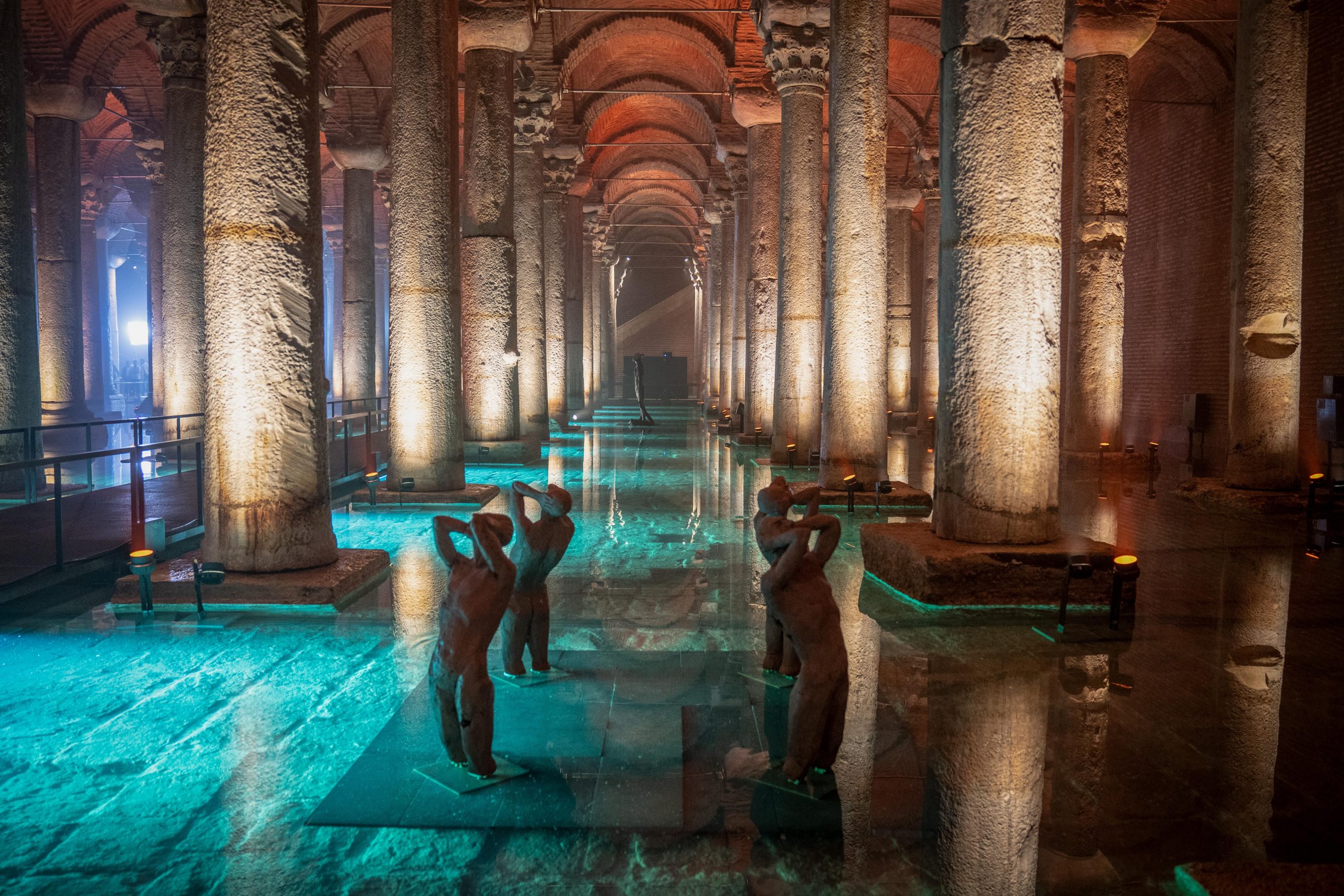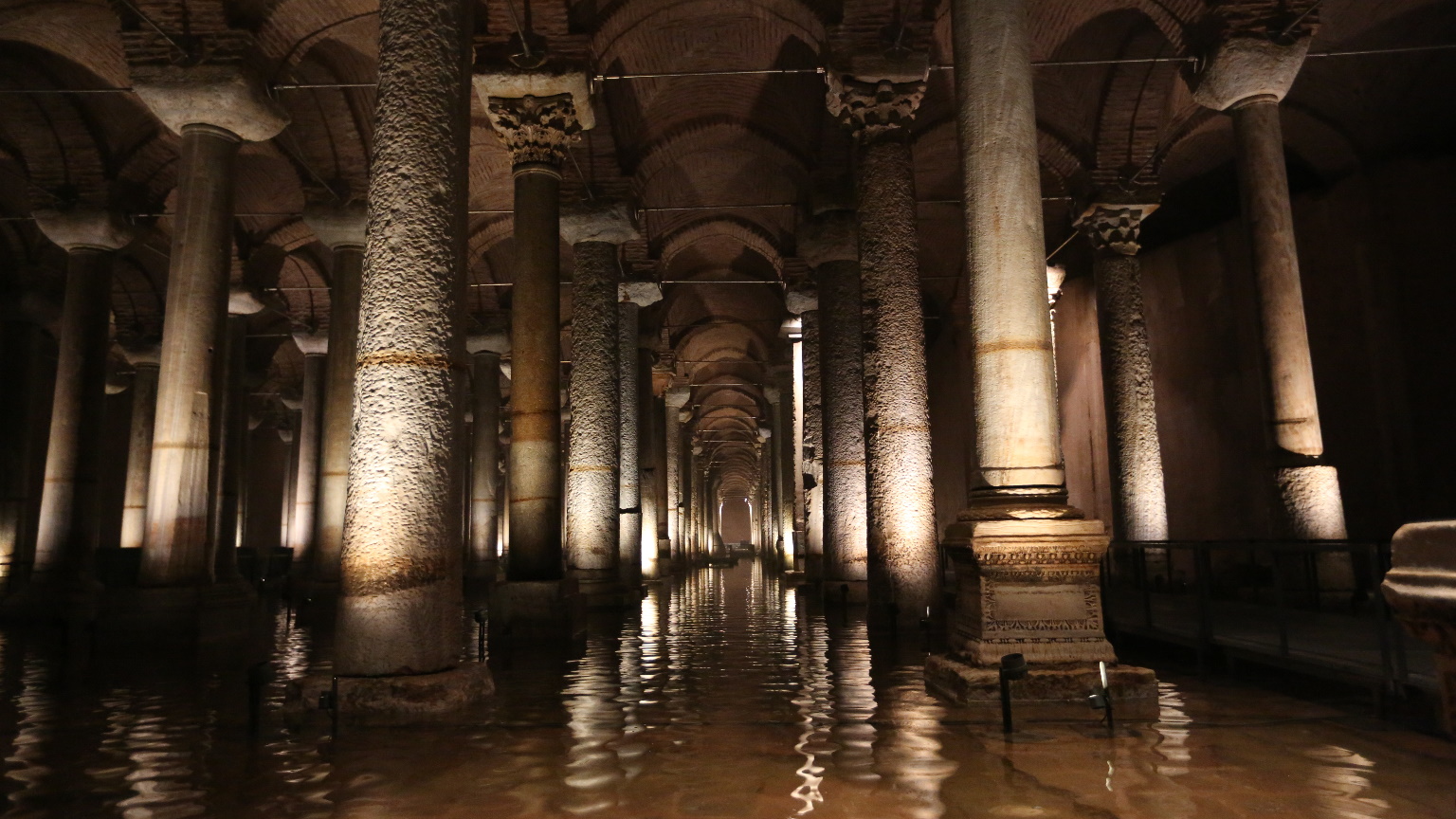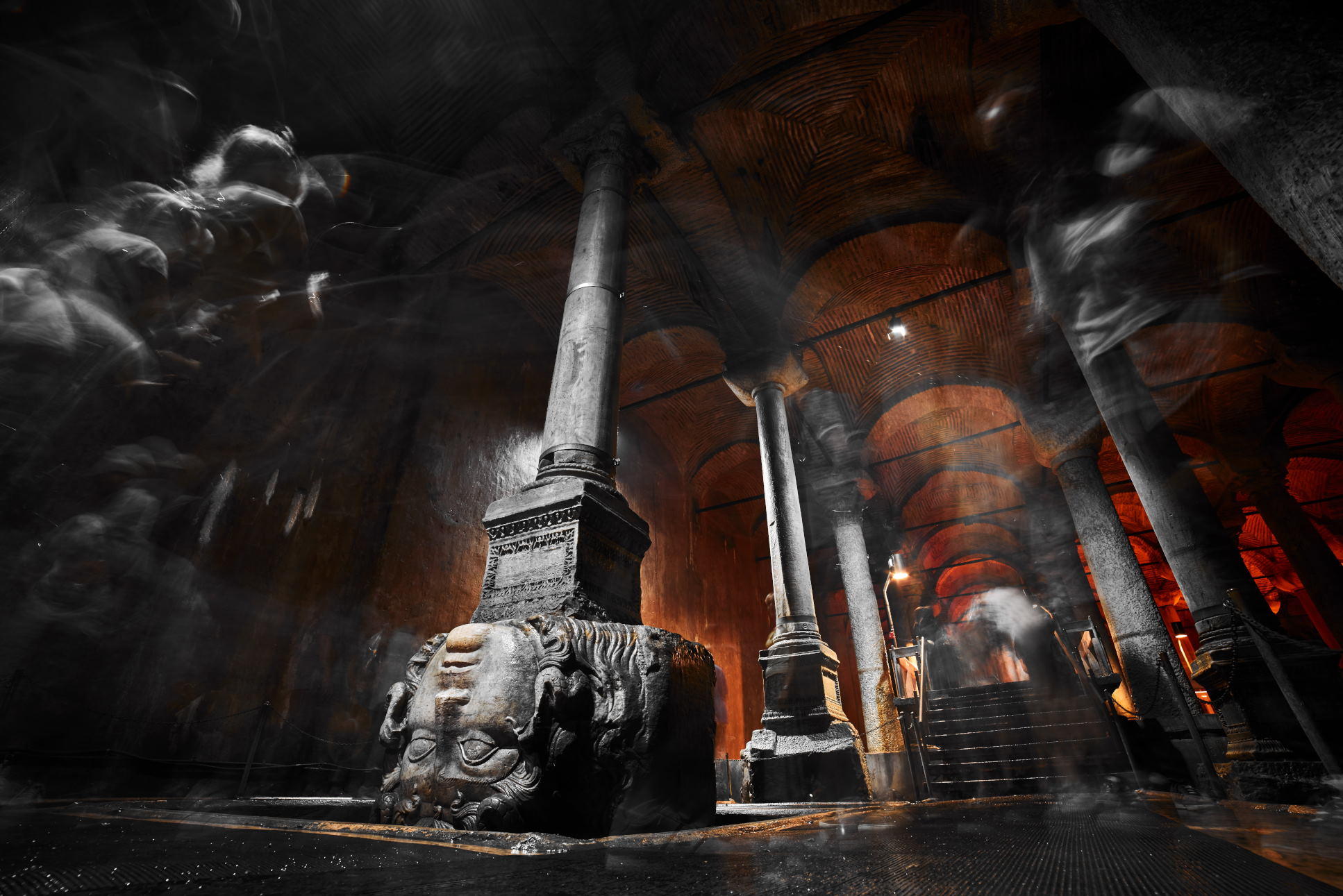Journey to the Depths: Istanbul’s Basilica Cistern Unveiled
In the Byzantine era, Constantinople boasted over 100 underground cisterns, a testament to the strategic planning that went into providing a stable water source for the city’s inhabitants and key structures like palaces and public baths. As the sands of time have shifted, many of these subterranean marvels have faded away or fallen victim to destruction, leaving only a handful standing resilient. Among these survivors, the Basilica Cistern, also recognized as the Yerebatan Cistern, emerges as a captivating relic, showcasing the architectural ingenuity of the past and preserving the whispers of history within its walls.

Basilica Cistern, commonly known as the Underground Cistern, unfolds its story in the 6th century AD during the rule of Byzantine Emperor Justinian I. This subterranean masterpiece, crafted with ambition and precision, came to life between 532 and 542 AD, a mere decade witnessing its inception to completion.

Ethymologically, the name “Basilica Cistern” weaves a tale intertwined with the echoes of a bygone era. Amidst various theories, one narrative stands out: a homage to the Stoa Basilica, a grandeur that once graced these grounds during the Roman epoch. Emperor Constantine I, in the 4th century AD, breathed life into the Stoa Basilica, a colossus serving as both courthouse and mercantile epicenter. The sands of time, however, were unkind, rendering the once-majestic structure obsolete and paving the way for the rise of the Basilica Cistern—a subterranean enchantment born from the remnants of its predecessor’s legacy.

Byzantine Period
Nika Riots in 532: During the tumultuous Nika Riots in 532, the Basilica Cistern played an unexpected role. It was repurposed as a temporary dungeon where rebel prisoners faced captivity and torture, adding a layer of historical significance to its silent depths.
Earthquake of 860: The foundations of the cistern felt the tremors of an earthquake in 860. In response to this natural upheaval, Byzantine Emperor Basil I orchestrated a resilient effort to repair and expand the cistern, showcasing the enduring spirit of this underground marvel.
Fourth Crusade in 1204: The Basilica Cistern became an unwitting witness to the Fourth Crusade’s tumult in 1204. As Latin Crusaders captured Constantinople, the cistern, typically a repository of water, took on an unexpected role—transformed into a stable for the horses of the victorious crusaders.
Reign of Emperor Andronikos II Palaiologos (14th century): In the 14th century, during the reign of Emperor Andronikos II Palaiologos, the Basilica Cistern underwent a significant chapter. This era saw meticulous repairs and the addition of new features to the cistern’s structure. An inscription in Greek proudly commemorates this restoration work, etching the legacy of rejuvenation into the very walls of the cistern.

Ottoman Period
Ottoman Utilization: Under Ottoman rule, the Basilica Cistern continued to serve its original purpose as a water reservoir. Ottoman rulers recognized its strategic importance in providing a stable water supply to the growing city.
Maintenance and Preservation: The Ottomans, known for their appreciation of architectural marvels, maintained and preserved the cistern. Although it might not have undergone major renovations, efforts were made to ensure its functionality and structural integrity.
Cultural Symbol: The Basilica Cistern became a part of the cultural fabric of Istanbul during the Ottoman period. Its mysterious ambiance and historical significance contributed to its allure as both a functional utility and a symbol of the city’s layered past.
Limited Historical Events: Unlike the Byzantine era, the Ottoman period saw fewer historical events directly linked to the Basilica Cistern. However, its silent presence endured, a witness to the ebb and flow of daily life in Istanbul.
Tourist Attraction: In more recent times, especially in the 20th and 21st centuries, the Basilica Cistern gained popularity as a tourist attraction. Its unique architecture, combined with historical remnants, drew visitors keen on exploring the city’s rich history.
Visiting Tips
Timing Matters: Visit early morning or late afternoon to avoid peak crowds.
Weekdays Are Ideal: Opt for weekdays over weekends for a quieter experience.
Photography Etiquette: Respect the dim lighting; be mindful of fellow visitors when taking photos.
Reflective Moments: Take a moment to absorb the ambiance by the water’s edge.
Explore Nearby: Combine your visit with nearby attractions like the Hagia Sophia and Blue Mosque.
Entrance Pass Information for Basilica Cistern:
Istanbul Museum Pass Not Valid: The Istanbul Museum Pass is not applicable at the Basilica Cistern. Visitors should be aware that separate admission is required for this historical site.
Guided Museum Pass Valid: However, a Guided Museum Pass is accepted, providing an opportunity for a curated and informative experience within the Basilica Cistern.
Official Website for Details: For the latest and most accurate information on admission fees, operating hours, and any updates, refer to the official website at yerebatansarnici.com.